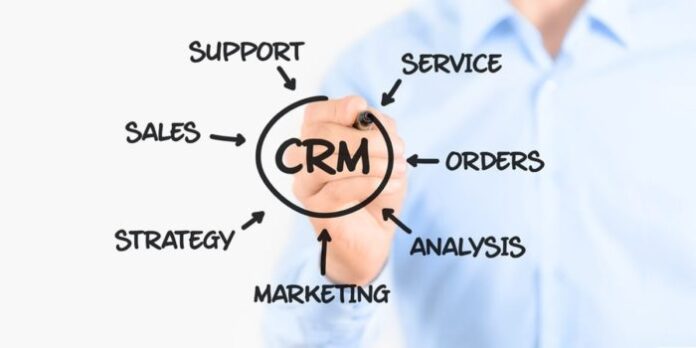A customer relationship management (CRM) solution can be an expensive investment, but a necessary one. No longer just a sales tool, CRM software is now considered the enterprise backbone that integrates and automates sales, marketing, and customer support functions so that businesses can better understand and manage their customer base.
Many businesses invest in a CRM solution, but many of them are not getting the full value out of it. One of the things they overlook is that often you need to integrate complementary tools, like VanillaSoft sales engagement software, to enhance the features of your CRM system and achieve best-in-class sales operations. For example, with the right sales stack integration, your conventional CRM solution can empower your enterprise sales reps to do their jobs more effectively and productively. The result is an outstanding customer experience that will allow your team to close more sales.
There’s even more that you can do to make the most of your software – here are some tips that you can use to help your sales team succeed and take your business to the next level.
Develop a Sales Cadence

A sales engagement solution integrated with your CRM platform can improve the productivity and quality of your lead engagement significantly. A CRM solution is only designed to capture contact information and customer data, but a sales engagement solution can work in tandem with your CRM to create and manage a repeatable sales cadence.
Developing a sales cadence allows you to implement and execute a carefully designed and consistent sales process that can be used by your whole sales team. By monitoring the results of these new workflows and your sales reps’ performance, you can use the data to optimize your sales cadence for better sales and profits.
Define Standard Operating Procedures

When a company purchases sales solutions like multi-seat user technology, it’s not enough to just receive the product and begin using it without a plan. To get the most out of them, it’s essential that your business sets up standard operating procedures (SOPs) so that everyone in your organization is on the same page.
Without a set of SOPs, you risk allowing your users to engage with the technology in whichever way they prefer. This can cause a host of problems, including:
- Miscommunication and/or lack of quality information.
- Failure to meet industry, company, or even local government regulations.
- Loss of efficiency.
- Lack of uniformity of performance.
Even though someone may find success engaging with the technology using their own methods, having no standardized data capture for reporting and analysis will mean that you aren’t able to utilize the information your reps collect for you properly. You also have no consistent way to train new reps, which could leave them confused and even performing poorly.
With a thoroughly documented and well-communicated set of SOPs, a business can:
- Lower change management issues that come up when switching solutions.
- Make new rep onboarding more manageable and repeatable.
- Help you better track and analyze metrics accurately thanks to consistency in rep usage and data capture.
So if you don’t have them already, then it’s time to create SOPs so that you’re making the most out of your CRM and any other business solutions you may have.
Provide Onboarding and Training

Having a set of SOPs is your first step to ensuring that all of your sales team is operating at the same level and that anyone new can understand and use the system in the same way. Next, you need to make sure that you design and implement an onboarding and training process where you can teach them these SOPs along with any other useful training that they may need to fill their role properly and productively.
It’s also important that you offer on-going training sessions to your current employees to help them stay up-to-date with system updates and sales processes. They’ll also benefit from getting refreshers from time-to-time on information that they’ve already learned.









